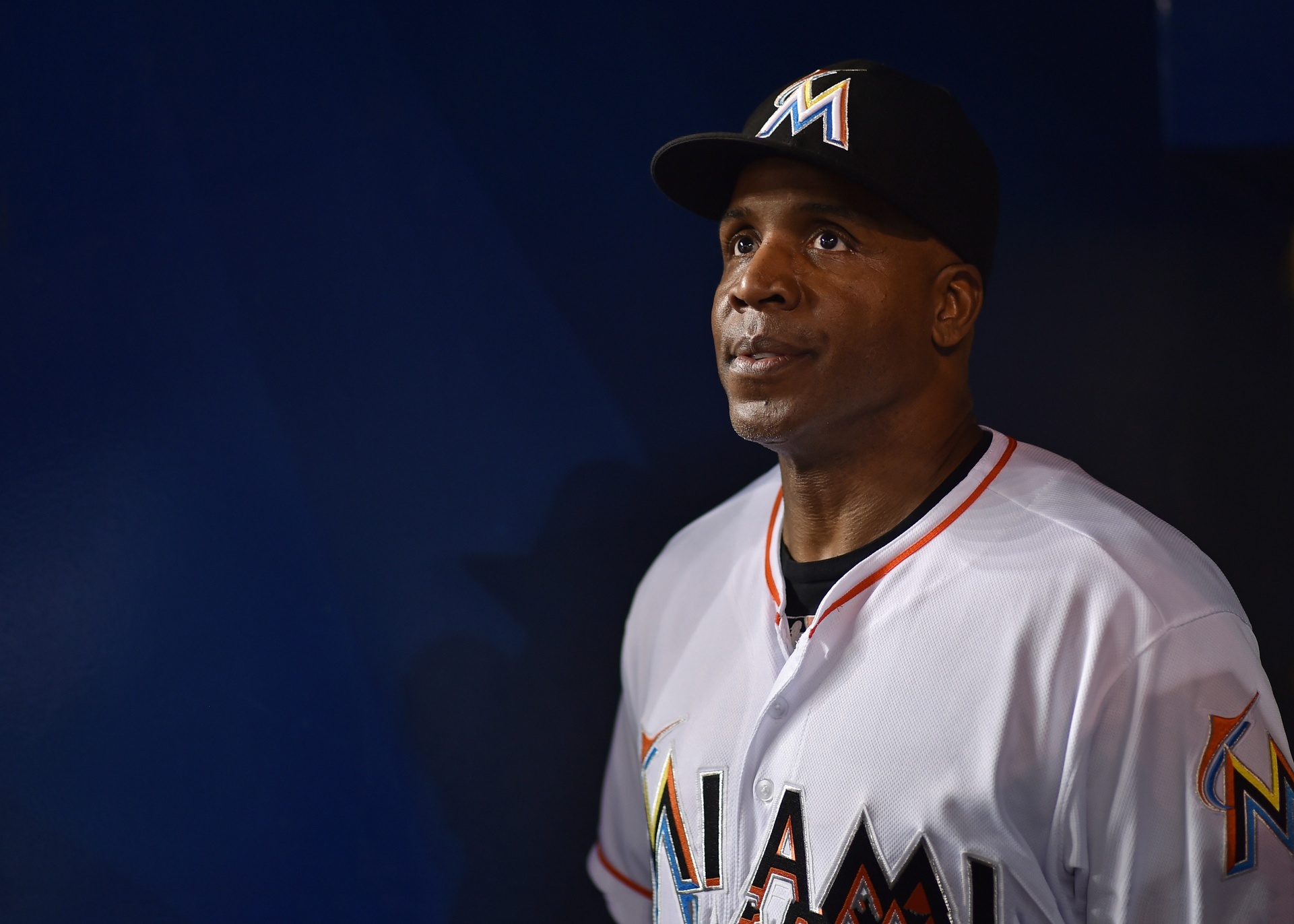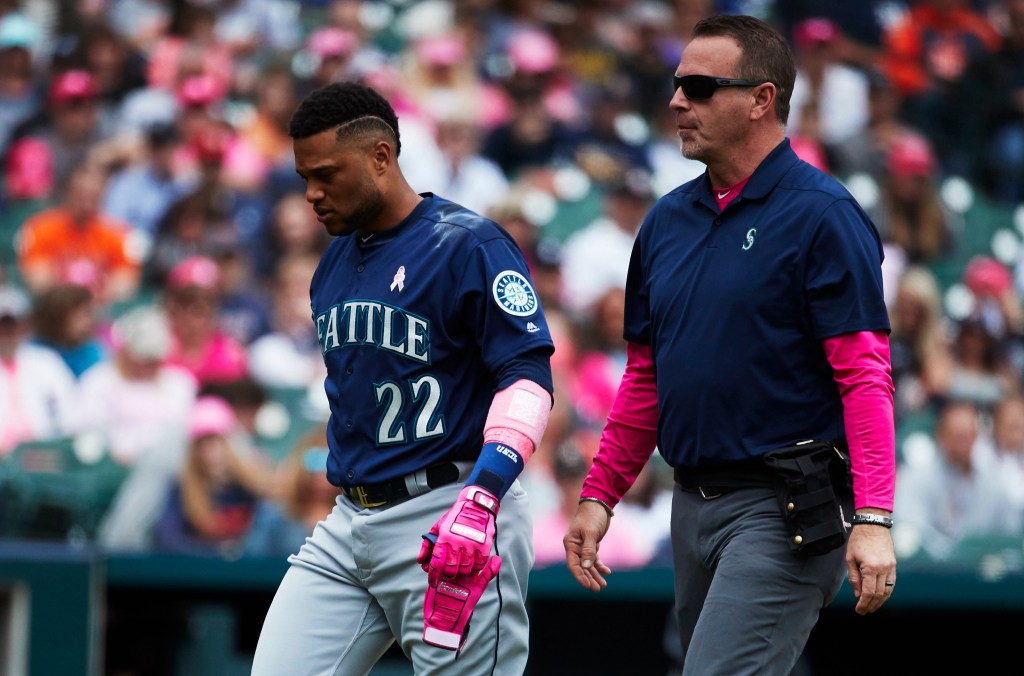Manny Ramirez was nothing if not unique. Growing up a Red Sox fan, I remember him as much for his ancillary antics—his mid-play high five of a bleacher bum in Baltimore, his lunging cutoff of Johnny Damon’s throw—as for his considerable hitting prowess. Ramirez amassed 555 home runs, a .996 OPS, and 69.2 WAR over his long career, in which he also hit a record 29 postseason home runs. For eight years in a row, he finished in the top nine in MVP voting. By wRC+ (min. 9,000 plate appearances—sorry, Mike Trout), he is the fourth-best right-handed-hitting outfielder in baseball history, and damn close to No. 1:
1. Willie Mays: 154
Videos by VICE
2. Frank Robinson: 153
3. Hank Aaron: 153
4. Manny Ramirez: 153
But, Manny being Manny, today Ramirez is judged first and foremost by something that happened off the field. With his debut on the Hall of Fame ballot this year, Ramirez has become the first serious Hall of Fame candidate who was suspended for steroid use. On May 7, 2009, Ramirez became the highest-profile player yet to be popped for PEDs; under the rules at the time, he was handed a 50-game suspension for a first-time positive test. Less than two years later, on April 8, 2011, it was announced he had tested positive for a second time. Looking down the barrel of a 100-game suspension, Ramirez opted to retire from the major leagues. He attempted a comeback in 2012, striking a deal with MLB to reduce his suspension to 50 games by virtue of the entire year he had missed in 2011. He served the suspension but was never called up from AAA.
Read More: Larry Walker Belongs in Cooperstown
The question of how to handle known steroid users in Hall of Fame voting is a thorny one, but many voters have settled on a chronological distinction. Before 2004, baseball as an institution—the players, the teams, the commissioner’s office, and even the media—turned a blind eye to steroids: while PEDs had ostensibly been banned from the league since 1991, there was no punishment for their use. It is unfair, these voters argue, to punish players retroactively for doping during a time when the league itself did not take it seriously (and even implicitly sanctioned it as a way to sell tickets). The recent election of Bud Selig, who presided over the proliferation of steroids as commissioner, to the Hall of Fame seems to have sanctioned this point of view, as Craig Calcaterra recently theorized. As a result, players who used steroids during this era—most infamously, Barry Bonds and Roger Clemens—are consolidating support. According to Ryan Thibodaux’s BBHOF Tracker, which aggregates Hall of Fame ballots released before the official announcement, over 60 percent of voters now support Bonds and Clemens for induction.
But these voters appear to draw the line at steroid use after 2004, when MLB began random drug testing in the major leagues with a series of light suspensions for guilty players: 10 days for the first offense, 30 for the second, 60 for the third, a year for the fourth. (The penalties have been toughened significantly since then; today, suspensions last 80 games for a first offense, 162 for a second—both without pay—and life for a third.) For the first time, baseball players were being publicly, unambiguously branded by the league as cheaters. For many voters, that is enough to disqualify players such as Ramirez from the Hall of Fame. “I have previously voted for Barry Bonds and Roger Clemens and will again. I believe their alleged use of performance-enhancing drugs came at a time in the game’s history when it was essentially approved,” wrote Peter Abraham in the Boston Globe. But “Ramirez was caught twice after that. He was not a product of his time; he was just crooked…. That’s enough to lose my vote.” Abraham isn’t alone. According to Thibodaux’s database, Ramirez has received just 24 percent of votes so far this year—over 39 percentage points lower than Bonds.
It’s easy to understand why this pre- and post-2004 distinction is appealing on the surface: it allows voters (and fans) to have it both ways, to justify votes for the undeniable greatness of Bonds and Clemens while still clinging to the moral high ground over PEDs. The problem is that using guys like Ramirez as your outlet for ‘roid rage denies a central pillar of not only baseball’s drug-enforcement policy, but also the entire criminal justice system.
For centuries, our legal system has relied on the fundamental premise that, once a criminal serves his sentence, he may rejoin society. A judge may hand down a sentence of 10 years in prison, and when that term is up, the former criminal is considered to have paid his debt in full. In the same way, Manny Ramirez served out two suspensions for performance-enhancing drugs; when he finished them, he was allowed to return to the lineup and play in the same baseball games as everyone else. Ex-convicts and suspended baseball players alike have served their time; they deserve no further punishment. In fact, in a perfect world, they should be treated the same as even the most innocent man off the street.
Or at least that’s the hope. As a society, we have had trouble sticking to the theoretical ideals of criminal justice. Ex-felons face discrimination in finding a job, getting housing, and regaining the right to vote. Likewise, positive testers like Ramirez who served their suspensions are discriminated against in Hall of Fame elections even when Bonds and Clemens aren’t. The two are not comparable in their importance, but they are parallel in their respective domains.

Voters’ stance on players like Bonds appear to be softening. Photo by Steve Mitchell-USA TODAY Sports
You may accept the logic that doping after 2004 was a more serious offense than doping before the testing era. But that does not mean that doping after 2004 should be subject to additional, unofficial punishment. No matter whether in the courtroom or on the diamond, punishments (in theory) are designed to fit the crime. In setting suspensions at 50 and 100 games (at the time of Manny’s transgressions), MLB made an official determination that those were the appropriate punishments for a first and second positive test. By imposing a lifetime ban only after a third positive test, MLB was likewise decreeing that one or two positive tests ought not to follow a player around for his entire life. Yet by voting for Bonds or Clemens but not Ramirez, a Hall of Fame voter is imposing additional punishment that was never intended for positive testers. This is no different than applying retroactive punishment to juicers during the homer-happy height of the steroid era—something these voters are loath to do.
Citing the character clause (“Voting shall be based upon the player’s record, playing ability, integrity, sportsmanship, character, and contributions to the team”), some Hall of Fame voters still see steroid use as an unforgivable sin. That’s a perfectly valid opinion. But to those who have shown at least some openness to voting for a man with PEDs in his past, drawing a distinction between the pre- and post-testing age is illogical and deeply flawed. If anything, the institution of testing and suspensions should make it easier for you to proceed in the opposite way: to vote for post-2004 users, secure in the knowledge that those players have already been punished appropriately for their transgressions against the game (Manny did, after all, lose out on 150-plus games’ worth of counting stats) while handing Bonds and Clemens the retribution they never received in their playing days. Withholding your vote from Ramirez instead—even though he has already served his deserved punishment for PEDs in full—makes you the baseball equivalent of a retail manager who will not hire an ex-con trying to get his life back on track. In both cases, an individual is arbitrarily imposing his or her own discipline outside the code of justice that either we have consented to as a society or that the players consented to in the JDA.
I’ve seen several voters bemoaning the lack of guidance from the Hall of Fame or from MLB on how to treat PED-abusing players. Well, since 2005, MLB has spelled it out for you: only after three confirmed uses of banned substances does a player deserve to be ostracized from baseball. For many reasons, Jenrry Mejia does not belong in the Hall of Fame; by handing him a permanent ban after his third positive test, MLB has declared him ineligible à la Pete Rose. Everyone else? Ramirez, Ryan Braun, Alex Rodríguez, Abraham Almonte? They have explicitly remained eligible players, entitled to the same rights and privileges as any other. MLB has forgiven them; shouldn’t you?
It may be difficult, but the most intellectually honest solution for Hall of Fame voters is to wrestle once and for all with what PEDs mean to you. If you believe steroid use is cheating, you should vote against all PED users in equal measure. If you believe that steroid use is an inevitable part of baseball history that the Hall of Fame should reflect, you should vote for all juicers—Bonds, Clemens, Ramirez —who meet your statistical standards. But straining to parse out a difference between PED users is trying to have your cake and eat it, too.
Want to read more stories like this from VICE Sports? Subscribe to our daily newsletter.




